Shopify has become a go-to platform for small business owners looking to set up an online store. While the platform makes it easy to launch an eCommerce store, simply creating a shop is not enough to ensure success. To truly drive conversions, you need to optimize your store to turn visitors into customers. This blog will show you how to make that happen using practical tips and real-world examples.
By the time you finish reading, you’ll know how to create a Shopify store that not only looks great but also helps increase your sales.
Create a User-Friendly Website
When it comes to online shopping, the experience matters. Visitors want to find what they need as quickly as possible with no confusion. A clunky or disorganized website can drive potential customers away. Start with a clean design that reflects your brand. Use clear navigation so visitors can find products without hassle.
For example, if you sell handmade candles, organize your products into categories like scents, seasonal collections, or gift sets. Include a search bar so customers can search directly for what they need. Consider adding filters to help narrow down options by price, color, or size.
Pro Tip
Mobile optimization is a must. Since many people shop on their phones, a mobile-friendly website can improve the overall experience and prevent shoppers from leaving out of frustration.
Use High-Quality Images and Descriptions
Your product images and descriptions are two of your best sales tools. Since customers cannot touch or see your products in person, what they see and read online creates their impression.
Use high-quality images that show your product from different angles. If possible, include lifestyle shots to help customers imagine the product in their life. For example, if you sell apparel, add photos of people wearing your clothing in real-world scenarios, like a comfortable hoodie being worn during a hike.
Descriptions should provide more than just the basics. Talk about materials, sizes, and features but also highlight the benefits of using your product. If you’re selling a skincare product, mention how it will make the customer feel, such as “leaves your skin hydrated and glowing all day long.”
Build Trust with Social Proof
Building trust with your audience is key to driving conversions. When customers feel confident in your products, they are more likely to make a purchase.
Start by including customer reviews and testimonials on product pages. Highlight real and honest feedback about how your product has helped someone. For instance, if you run a bakery and sell pre-made mixes, showcase reviews from people who loved how easy and delicious the mixes turned out for their family events.
You can also feature customer photos or videos. Many businesses encourage customers to share photos of themselves with the product by tagging the brand on social media. Displaying this user-generated content on your Shopify store gives new visitors evidence that people love and trust your products.
Simplify the Checkout Process
The checkout process should be quick and simple. A complicated or lengthy checkout experience can cause customers to abandon their cart. Shopify offers multiple options to streamline the process.
Enable guest checkout so customers are not required to create an account before purchasing. Provide multiple payment options like credit cards, PayPal, or even local payment methods that align with your audience. Offer free or transparent shipping options so there are no surprises at the end of the transaction.
Real-Life Example
A small jewelry shop based in Austin saw a 35% increase in conversion rates after adding a simplified one-page checkout. Customers appreciated the speed and efficiency, making them more likely to complete their purchase without hesitation.
Leverage Discounts and Promotions
Who does not love a good deal? Discounts and exclusive promotions can encourage visitors to take the plunge and make a purchase. Use these wisely to boost sales during slow periods or to clear out old inventory.
Shopify makes it easy to create discount codes, which you can promote on your website, social media, or through email marketing campaigns. For example, you could run a promotion during the holiday season offering 20% off gift packs or providing free shipping for orders over a certain amount.
Use urgency to your advantage as well. Limited-time offers give customers that extra little push to buy now rather than waiting.
Add Upselling and Cross-Selling Opportunities
Upselling and cross-selling can significantly increase the average order value in your Shopify store. Shop owners can use apps to recommend related items during the checkout process or when customers view a specific product.
For instance, if you sell pet supplies, you could suggest adding chew toys when customers buy dog food. Alternatively, premium options like a larger pack or upgraded version of the product could be highlighted.
Use product bundles as part of your cross-selling efforts. Bundling complementary products together at a discounted rate can help move more inventory while saving your customers money.
Optimize for Speed
Nobody likes a slow-loading website. Not only does it frustrate visitors, but it can also hurt your store’s search engine rankings. Shopify users can take steps to optimize their shop’s speed by compressing images, using fewer plugins, and choosing a lightweight theme.
When a small boutique selling handmade soaps optimized their website speed, they noticed a 22% improvement in conversions. Every second matters when someone is deciding whether to stay or leave your site.
Use Analytics to Make Data-Driven Decisions
Finally, data is your friend when it comes to improving conversions. Shopify offers built-in analytics, and you can also integrate tools like Google Analytics for a more in-depth look at how your store is performing.
Pay attention to where customers drop off in the shopping process. Is it on the product pages? Are they leaving during checkout? Use this information to make targeted improvements. For example, if analytics show customers are abandoning carts without completing their purchase, consider sending automated follow-up emails with a discount code to encourage them to return.
Closing Thoughts
Setting up a Shopify store is only the beginning. To drive conversions, you need to focus on creating a user-centered experience built on clear navigation, high-quality visuals, and trust. Simplify the checkout process, offer promotions to entice buyers, and use data to keep improving.
With these tips in mind, you now have the tools to transform your Shopify store into a conversion powerhouse. Start with small changes and test the results. The more you tailor your store to your customers’ needs, the closer you’ll be to achieving your sales goals.
We Want To Talk To You About Your Marketing Goals.
Let’s Supercharge Your Online Growth!












